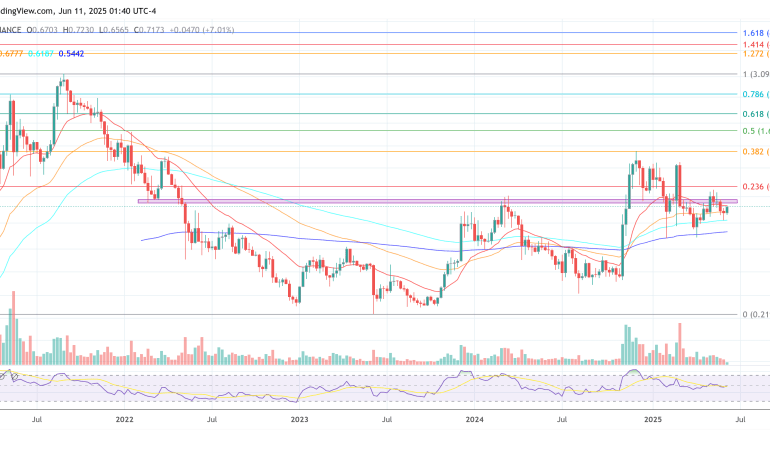
Introduction
The world of cryptocurrency is no stranger to bold predictions, and Charles Hoskinson, the founder of Cardano, has recently made headlines with his assertion that ADA, Cardano’s native token, could potentially outperform Bitcoin by a staggering margin. This claim, made during a discussion with Blockworks co-founder Jason Yanowitz on July 28, has ignited a vibrant debate among crypto enthusiasts and investors alike.
Hoskinson’s Perspective on ADA and Bitcoin
In the interview, Hoskinson elaborated on his belief that while Bitcoin (BTC) has established itself as the pioneer of digital currencies, its future growth may be limited compared to the potential of ADA. He stated, “I think we are going to see a 1,000x difference in the future.” This bold prediction raises eyebrows and invites scrutiny, prompting many to question what factors could contribute to such a significant disparity in performance between the two cryptocurrencies.
Market Dynamics and Innovations
One of the key aspects of Hoskinson’s argument is the innovative capabilities of the Cardano platform. Unlike Bitcoin, which primarily serves as a store of value, Cardano aims to provide a comprehensive framework for decentralized applications (dApps) and smart contracts. This versatility could be a game-changer in the long run, as the demand for scalable and efficient blockchain solutions continues to rise.
Moreover, Cardano’s unique proof-of-stake consensus mechanism is touted for its energy efficiency and sustainability, appealing to a growing number of environmentally conscious investors. As global scrutiny of energy consumption in crypto mining intensifies, Cardano’s approach may position it favorably in the evolving market landscape.
The Debate Among Crypto Investors
Despite Hoskinson’s optimistic outlook, the crypto community remains divided. Supporters of Bitcoin argue that its status as the first cryptocurrency gives it a level of trust and adoption that is hard to match. Bitcoin has established itself as a digital gold, and many investors view it as a hedge against inflation.
Critics of Hoskinson’s prediction point out that while Cardano has made significant strides, it still faces fierce competition from other blockchain platforms and established cryptocurrencies. The question remains whether ADA can attract a sufficiently large user base and developer ecosystem to realize the ambitious growth Hoskinson envisions.
Conclusion
As the cryptocurrency market continues to evolve, predictions like Hoskinson’s serve as a reminder of the inherent volatility and unpredictability of this space. While ADA may have the potential for impressive growth, investors should approach such claims with a critical mindset and conduct thorough research.
Ultimately, the future of both Cardano and Bitcoin will depend on various factors, including technological advancements, market trends, and regulatory developments. As the debate rages on, it is clear that both cryptocurrencies will play pivotal roles in shaping the future of digital finance.



